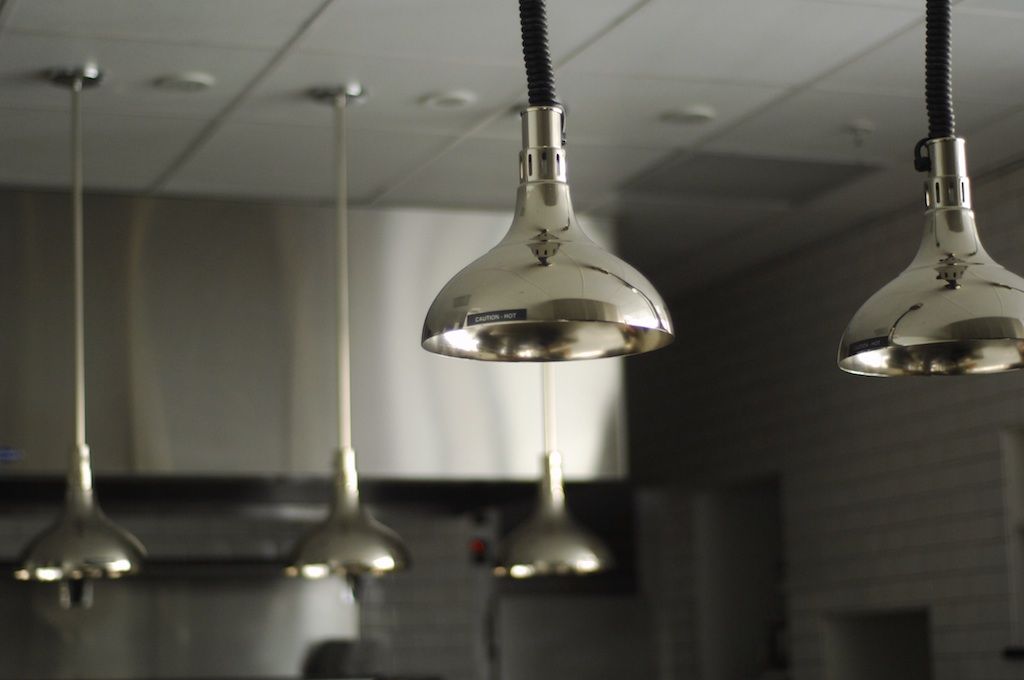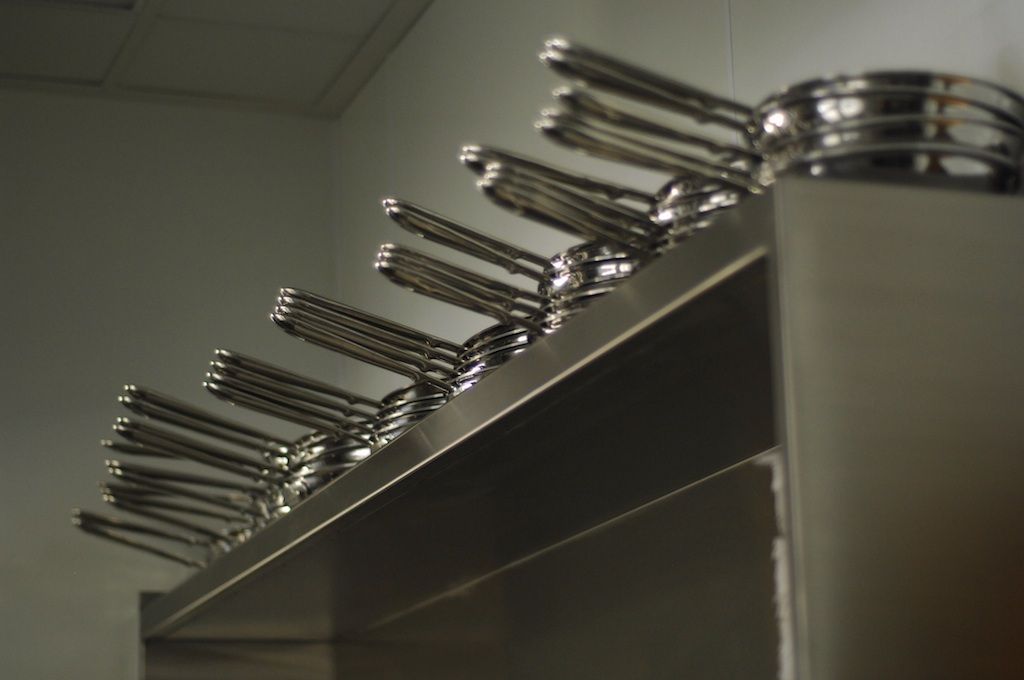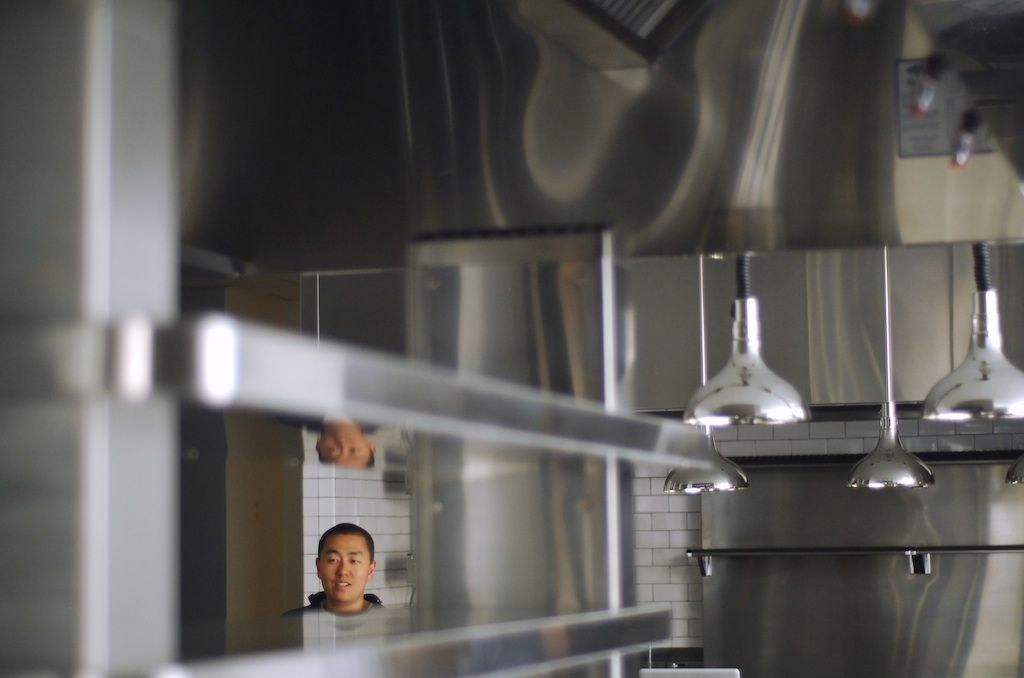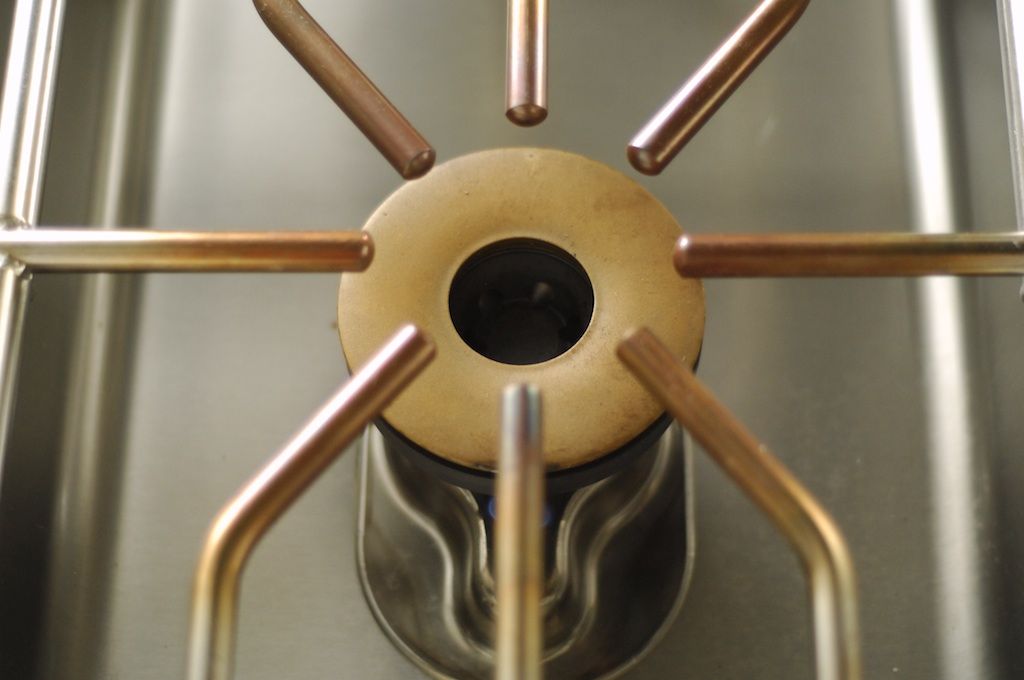This section is written by Erin Archuleta, half of the talent behind local outfit ICHI Catering and ICHI Lucky Cat Deli (at 331 Cortland in Bernal Heights). For updates, follow @ICHISUSHI on Twitter. Outside of the foodie world, Erin works full-time championing kid literacy at 826 National. Keep up with her @erinarchuleta.
Many of my chef-friends were geeking out that I had the opportunity to sit down and chat with Corey Lee. After all, every chef and line cook out there fantasizes about what s/he would do with his/her own space given the opportunity, and here in San Francisco, Corey has just upped the ante. A James Beard Award winner who has worked at seven three-Michelin-star restaurants, Corey has worked under some of the biggest talent and in some of the most sophisticated kitchens in Europe and the U.S., including, most recently, leaving his post as the chef de cuisine at The French Laundry. And now, Benu, his first restaurant is slated to start with a hard opening date of August 10th, 2010. The website features a countdown showcasing the build-out process, and his team is now accepting reservations.
So, without much surprise, San Franciscans have been waiting and trying to get a peek at Benu (at 22 Hawthorne Lane in the former Two space), to see what he’s doing in there. Benu’s name references the Egyptian word for the phoenix, symbolizing a rebirth, or new beginning. It makes sense that Corey would reach to another corner of the globe when sourcing his inspiration, as his menu is not limited to any particular region of the world.
There’s no doubt that he has investors who trust him, and teams to execute his perfect vision, so folks all over the Bay Area have been dying to take a gander at exactly what Corey Lee’s dream first space looks like. And friends, just a couple weeks out from opening, I report—it’s cozy, calm, and elegant (much of what you might guess after reading interviews or watching YouTube videos of Corey in action). His presence is tranquil, measured, knowledgeable, and hospitable—it’s no surprise that this restaurant is an extension of his natural disposition.
When talking about the realities of the renovation of the space, Corey notes, “When you open a restaurant and talk about a build-out, it’s all about finding the right balance between all the different areas—what you spend on the mechanical, what you spend on the kitchen, the dining room. And, it’s really about being able to prioritize and organize your finances.” We talked about how 80% of the resources and cost used to renovate a major restaurant space the diners will never see: the ductwork, seismic reinforcements, the electrical, and framing. All of the necessity, in this case, is housed in some real beauty.
The major players in the design of the space include James Beard award-winning architecture firm Richard Bloch Architect (Corey collaborated with them in the past on other Keller remodels), designer Andrea Lenardin Madden working on the graphics, and the creative products design firm Blueoculus. Their sunken dining room has strong structural details, some of which are seismically necessary for this historic building from 1912. Others add visual interest, like columns that break up the sightlines of an entryway, keeping it from becoming too boxy, too clean.
For any former Two diners, there are a few big contrasts from your previous experiences: first, the space has been halved; and second, the dining room is bright and white with calming grey influences, a huge change from the dark, deep draw to the bar area of the former restaurant. The third biggie: there is no bar. That’s right, this fine dining restaurant is putting itself out there as just that. There are two options: an à la carte menu, and for the diner seeking an evening of it, an 8-12 course tasting menu. Wine plays a focus here, with two sommeliers employed for this 64-seat restaurant, including Master Sommelier and 2009 StarChefs’ Rising Star, Yoon Ha. But, even with two wine masters on the floor, Corey plans to keep things minimal, offering a tight list of wines at a range of prices, with a few high-end selections from which to choose.
In talking about the process for selecting the roughly 50 menu items (including New American eats like abalone porridge with wood ear mushrooms and green onion, and rigatoni with braised sea cucumber, oxtail, star anise, red wine, and butter) readying for launch, we discussed some of the differences between cooking in Yountville and cooking here in SF. It made sense to address the fact that while there are some regular diners in Yountville, the majority of the clientele would be tourists. He noted that people headed to Napa Valley are looking for a vacation destination specifically for food and wine, whereas people coming to San Francisco are not necessarily just seeking food and wine options.
The seasons here in Northern California play a major role in defining Benu’s menu. When I asked Corey about his approach to seasonality, he had this to say: “When you think of the seasons, you think of four seasons, but I think there’s more like 16 seasons. For example, favas—fava [beans] are available five months a year, but there are only a few weeks when favas are really, really good. So there’s all these subseasons within the seasons.”
To execute these 16 seasons, Corey has created one of the most chef-friendly kitchens I’ve ever seen. From recessing the ceiling of the bookstore below to create an ergonomic workstation above in the dishwasher galley, to having custom reach-ins built into the kitchen hallway’s design to replace what Corey described to me as walk-ins with dead space in the middle, his space plan is meticulous. As he describes his kitchen, you get the sense that not only does this guy think in terms of precision and efficiency, but also of the people at their workstations. Corey has chosen a lifestyle, and he’s asking for more from his kitchen. This is, he notes, his fourth time experiencing a remodel, two at The French Laundry, and one at Per Se. He’s piloting a stove made by Viking, with a mid-room island French Top range in which the heat is gradually diffused through the polished plate on top. This will be the first of its kind in America.
His kitchen is bathed in natural light, with passersby able to peer in from the Hawthorne Street side to watch the team in action. Corey’s team features two sous chefs named Brandon (Brandon Rodgers, a former Bocuse d’Or competitor with Gavin Kaysen, and Brandon Rosen, who worked at Alain Ducasse at the Essex House)—both Brandons were colleagues of Corey’s at The Laundry. Masaki Watanabe joins the Brandons, bringing French-Japanese cooking chops to the collaborative process as the third sous. The foursome have been innovating and perfecting the menu.
Of this menu’s regional influences, Corey elaborates, “I don’t think it’s defined by geography…When I first started cooking you were limited to these very distinct genres: classical French, haute cuisine, Italian…I don’t think these same boundaries exist. We’re kind of limited by our own vocabulary to describe what kind of cuisine we’re doing. And also, it comes down to something that is very personal. Something that reflects your own experience. And also the people you’re working with and their experience and so forth. To be able to tap into that, if you do that, then naturally you’re going to do something that is unique and original and inspired.”
One of my favorite moments touring through the new kitchen equipment is when Corey pauses to show me what might be the largest blender pitcher I’ve ever seen—used for all the daily vegetable trim to be puréed into staff smoothies. There’s a real care that goes into this kitchen, and you get a sense that there’s a lot of built-in rooting for the team.
In an era when so much of food and dining is fetishized, it feels like Corey is quite the opposite, returning to the classic notion of diners going out for an excellent meal in a special setting. Everything from creating custom Korean-crafted KwangJuYo porcelain dishes to sourcing hand-blown and etched Kimura glassware showcases the menu. In thinking of the dining experience, Corey even considers the foot positioning of the diner, by requesting that the designers create flat steel table bases (think: never having cramped feet that accidentally kick an adjacent diner again, or better yet—easy footsie access!). So with the Blueoculus design team, they collaboratively created the mac daddies of all two-top and four-top tables, weighing in at 100 and 200 lbs., respectively. I’m just picturing the classic table flip move of the Real Housewives of New Jersey going nowhere—Corey Lee may have created the answer to classing up America again, folks.
There’s a private dining room with seating for up to 18 of your nearest and dearest, hidden between the kitchen and the larger dining room space with a galley of windows peeking in from the little garden outside that was the former parking lot. The grasses and fragrant flowers are on one side of the diners, and rotating art from neighboring Crown Point Press on the other. The garden area offers up a spot for an after-dinner drink where you can sit amongst the coastal grasses, referencing an intersection of urban life and how we coexist with nature so close at hand, another nod to the idea of his own Benu—a reflection of the name, with Corey’s own rebirth in his new space.
All photos by Blair Sneddon Photography.








